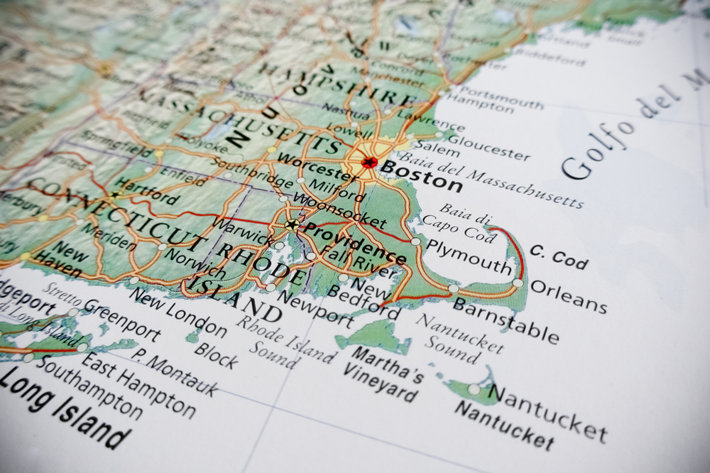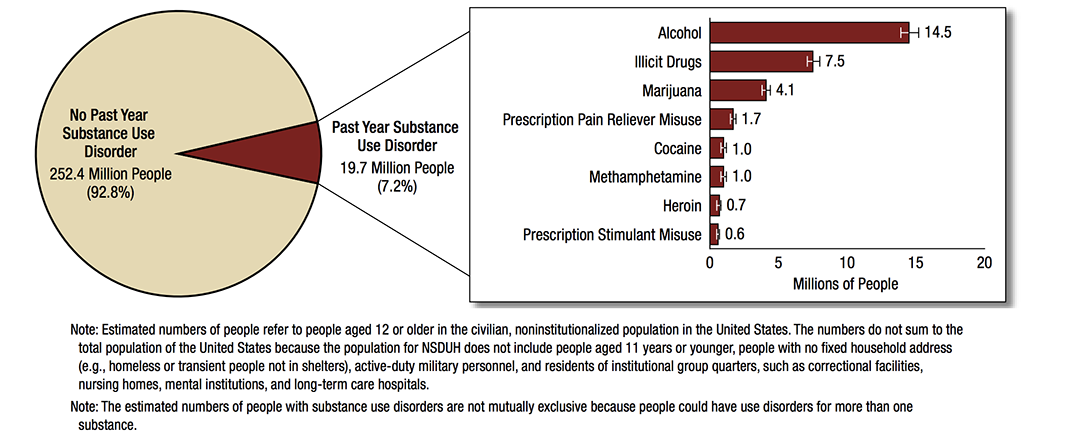The East Coast Suffers under the Weight of Opioid Addiction

The United States has suffered for nigh on two decades with an opioid crisis. It is a sweeping addiction epidemic that has torn millions of families and individual lives apart. Widely publicized as the worst addiction-related epidemic in the history of our nation, opioid addiction first came about on a grand scale in the late 1990s with the mass introduction of opioid pharmaceuticals as being the primary method of dealing with patient pain.
And while news releases and media pundits shout from their radio towers that the opioid crisis is a nationwide issue (and it is), they often miss the point that drug and alcohol addiction affects some areas of the nation with far greater severity than it does others. Recent information from the last few months of 2018 tells us that the opioid crisis might be up to four times more severe in parts of the Northeastern United States than we initially thought.
An article from October 2018 in The Boston Globe had the story. Massachusetts, a state heavily impacted by the opioid crisis, was thought to have 1 percent of its population over the age of 11 addicted to opioids. That was data from national surveys. But the Boston Medical Center published its own study, claiming that 275,000 residents or 4.6 percent of the population over the age of 11 were struggling with an opiate addiction.
Different Methods for Examining an Addiction Crisis
For years, national research programs and data-gathering projects studied the opioid addiction epidemic by way of how many people in each state were dying from opiate overdoses. But just looking at the overdose deaths in any geographic area is not necessarily an accurate indicator of that area’s drug problem. It is an indicator, but it is not the only indicator.
The Boston Medical Center offers a different means of determining a state’s drug problem, i.e., by the number of addicts in that state.
Determining the number of people who struggle with drug and alcohol addiction has always been a difficult feat to accomplish. Overdose deaths are hard, concrete, statistical facts. But addiction can be a little transient, with different people struggling with addiction one week, getting clean the next, relapsing, and so on. Depending on the week that you speak with them, they may give you entirely different answers on whether they are “addicts” or not. Relative levels of honesty among survey participants is a factor as well.
But the Boston Medical Center derived a more or less reliable system for determining the number of opioid addicts in the state of Massachusetts. The researchers tallied incidences of opioid addiction based on patient encounters with the healthcare system. They arrived at 119,000 people who had had such encounters by 2015—the year for which they had the most recent information. Then, the researchers used statistical methods employing the laws of probability to estimate the number of Massachusetts residents who struggled with opioid addiction, but who had not had encounters with the healthcare system. They arrived at an additional 156,000 people—altogether, 4.6 percent of the population, (i.e., 275,000 residents).
Drug Addiction on a National Scale
Out of curiosity, I decided to do some additional research and see if I could find information on how many people struggle with drug and alcohol addiction in the United States as a whole. After scouring the internet and studying various research papers, I found one line in a research paper submitted by the National Survey on Drug Use and Health and published by the Substance Abuse and Mental Health Services Administration (see page #6 of the report under “Substance Use Disorders”).

According to that research paper: “In 2017, approximately 19.7 million people aged 12 or older had a substance use disorder (SUD) related to their use of alcohol or illicit drugs in the past year, including 14.5 million people who had an alcohol use disorder and 7.5 million people who had an illicit drug use disorder.”
The text did not indicate how the authors arrived at their findings, but I imagine the research metrics were similar to those used by the Boston Medical Center.
What We Can Learn from the Boston Research
The media buzzwords for the opioid addiction crisis are very predominantly “overdose” and “death.” However, only focusing on the death toll from drug and alcohol addiction does not give an entirely accurate picture of the sweeping problem. And it influences our methods of addressing the issue, too. When we focus solely on the death toll of addiction, our focus becomes one of dealing with only the overdoses themselves and not addiction as a whole.

I’m not saying we should stop trying to prevent overdoses. Our efforts with naloxone, the emergency overdose reversal medicine, and other efforts taken in individual communities and entire states to reverse the growing death toll are all laudable. But if we don’t equally if not moreso focus our attention on addressing the addictions themselves, we are going to get caught in a trap of always trying to solve the effects (overdoses and death) of addiction, rather than addressing addiction itself. It will become a never-ending cycle.
We need to focus our attention on a multi-faceted approach which recognizes not only overdose deaths but also the population of those who are addicted. Each community, town, city, and state should come together in a cohesive effort not only to save the lives of those who overdose on opiates, but also work together to try to help addicts to come down off drugs before they suffer an overdose.
That is where residential drug and alcohol addiction treatment centers come into play. Residential drug rehabs help people by getting them completely off drugs so they never face the risk of overdose again. Drug rehabs give people their lives back, creating a safe and stable world for them from which they can grow and expand into a new and better life. If we can focus on getting addicts into rehab and off drugs, we may yet have a chance at curbing the growing tide of addiction in America.
Sources:
- https://www.bostonglobe.com/new-study-says-opioid-addiction-mass-much-worse-than-thought/
- https://ajph.aphapublications.org
- https://www.samhsa.gov/data/sites/default/files/cbhsq-reports/NSDUHFFR2017.pdf


 ®
®